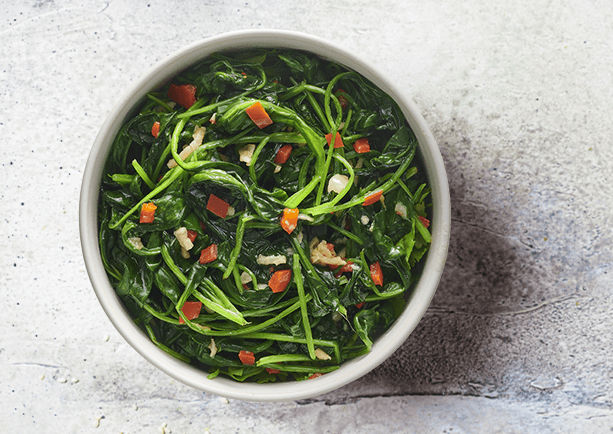20 Days of Low GI Diet Meal Plan for Steady Blood Sugar

Have you ever wondered why some foods leave you feeling satisfied and energised for hours while others cause a sudden spike in energy followed by an inevitable crash? The answer lies in the glycemic index (GI) of your foods. But what exactly is the glycemic index, and why should you care about it?
Understanding the GI of your meals can be a game-changer, especially if you're looking to maintain steady blood sugar levels throughout the day. Whether managing diabetes, aiming to lose weight, or simply wanting to make healthier food choices, a low-GI diet meal plan can offer numerous benefits. This approach not only helps keep your blood sugar levels stable but also reduces the risk of developing type 2 diabetes, heart disease, and even certain types of cancer.
In this blog, we’ll explore the glycemic index (GI) concept, how low-GI diets work, and the factors that influence the GI of foods. We’ll also provide a comprehensive 20-day low-GI diet meal plan to help you maintain steady blood sugar levels and support your overall health.
What is the Glycemic Index (GI)?
The glycemic index (GI) is a system that ranks foods based on how quickly their carbohydrates are converted into glucose in the body, which directly affects blood sugar levels. Developed in the early 1980s, the GI scale ranges from 0 to 100, with higher numbers indicating foods that cause a rapid increase in blood sugar. Understanding the GI of foods is essential for anyone following a low GI meal plan, as it helps select foods that promote steady blood sugar levels.
Foods are categorised into three main groups:
- Low GI (0-55): These foods are digested and absorbed slowly, gradually increasing blood sugar. Examples include most fruits, legumes, and whole grains.
- Medium GI (56-69): These foods moderately impact blood sugar levels. Examples include brown rice and couscous.
- High GI (70 and above): These foods are rapidly digested and absorbed, causing spikes in blood sugar levels. Examples include white bread, most breakfast cereals, and baked potatoes.
What Factors Affect the GI of Food?
When discussing the factors that affect a food's Glycemic Index (GI), it's important to understand how these factors influence the rate at which carbohydrates are digested and absorbed, subsequently impacting blood sugar levels. Here are the key factors:
Type of Carbohydrate: Different carbohydrates are digested and absorbed at varying rates. Simple carbohydrates like glucose are quickly absorbed, leading to a higher GI, while complex carbohydrates like starches have a slower digestion rate, resulting in a lower GI.
Fiber Content: Foods high in soluble fiber tend to have a lower GI because fiber slows digestion and glucose absorption, resulting in a more gradual increase in blood sugar levels.
Fat and Protein Content: Fat and protein in a meal can lower the GI by slowing the digestive process. This delayed digestion prevents rapid spikes in blood sugar levels.
Ripeness of Fruits and Vegetables: Riper fruits and vegetables typically have a higher GI than their less ripe counterparts because the carbohydrate content becomes more accessible as the produce ripens.
Acid Content: Foods with higher acid content, such as those containing vinegar or lemon juice, tend to have a lower GI. The acid slows gastric emptying, leading to a slower absorption of carbohydrates.
What Happens When You Follow a Low-GI Diet Meal Plan?
A low-GI diet meal plan helps maintain steady blood sugar levels, reducing the risk of sudden spikes and crashes. This is particularly beneficial for individuals with diabetes, as it supports better overall glucose management.
Enhanced Insulin Sensitivity
A low-GI diet can improve insulin sensitivity by gradually releasing glucose into the bloodstream. This means your body becomes more efficient at using insulin, crucial for preventing and managing type 2 diabetes.
Reduced Risk of Type 2 Diabetes
Following a low GI diet meal plan lowers the strain on the pancreas, helping to prevent the development of insulin resistance and, consequently, reducing the risk of type 2 diabetes.
Heart Health
A low-GI diet encourages the consumption of whole, unprocessed foods rich in fiber and healthy fats. This can lead to better heart health by lowering cholesterol levels and reducing the risk of cardiovascular diseases.
Sustained Energy Levels
Low-GI foods provide a steady energy source, helping you avoid the energy crashes that often follow high-GI meals. This can improve overall productivity and daily energy levels.
Weight Management
Because low-GI foods are digested slowly, they help you feel full for extended periods. This can reduce hunger and the urge to snack between meals, aiding in weight management and preventing overeating.
Reduced Risk of Certain Cancers
Some studies suggest that following a low GI diet meal plan may lower the risk of developing certain types of cancer, particularly those linked to high blood sugar levels and insulin resistance, such as breast and colorectal cancer.
How is Meal Plan Structure Curated?
The low GI diet meal plan is structured around three main meals and two snacks per day, each carefully selected to ensure a balance of nutrients and a low glycemic impact. The goal is maintaining steady blood sugar levels throughout the day while providing sustained energy and satiety. Here’s how the plan is designed:
Breakfast: Each day starts with a breakfast that includes low-GI foods like whole grains, lean proteins, and healthy fats. These meals are designed to provide a slow release of energy, keeping you full and focused until lunch.
Lunch: Midday meals focus on lean proteins, vegetables, and whole grains, ensuring you stay energised and avoid the afternoon slump. These lunches are satisfying and packed with nutrients that support overall health.
Dinner: Evening meals are lighter but still nutrient-dense. They focus on easily digestible proteins, fibre-rich vegetables, and whole grains. These meals are designed to be satisfying while promoting good digestion and restful sleep.
Snacks: The plan includes two daily snacks to prevent blood sugar dips between meals. These snacks are carefully chosen to be low-GI and balanced, providing a mix of healthy fats, protein, and carbohydrates to keep hunger at bay and energy levels stable.
20-Day Low GI Diet Meal Plan
|
Week |
Focus |
Breakfast |
Lunch |
Dinner |
Snacks |
|
Week 1 (Day 1-7) |
Introduction to Low-GI Eating |
Start with simple, low-GI meals like oatmeal with berries, whole grain toast with avocado, or Greek yogurt with nuts. |
Balanced meals with lean proteins, whole grains, and vegetables, e.g., grilled chicken salad with quinoa or lentil soup with greens. |
Light, satisfying dinners like baked salmon with steamed broccoli and brown rice or tofu stir-fry with veggies. |
Low-GI snacks include apple slices with peanut butter, almonds, or carrot sticks with hummus. |
|
Week 2 (Day 8-14)
|
Expanding Your Low-GI Repertoire |
Introduce variety with new ingredients like flaxseeds in oatmeal, smoothies with Greek yogurt, or savoury breakfast bowls. |
Incorporate plant-based proteins and diverse grains like quinoa, black bean salad, chickpea, and avocado wraps. |
Explore new dishes like roasted vegetables, lentil stew, or grilled fish tacos with cabbage slaw. |
Experiment with snacks like roasted chickpeas, cucumber with tzatziki, or trail mix with nuts and dried fruits. |
|
Week 3 (Day 15-20) |
Refining Your Low-GI Diet |
Personalise meals with mix-and-match options like savoury quinoa bowls or fruit salad with Greek yogurt and nuts. |
Refine meal prep with versatile dishes like Mediterranean bowls with grilled chicken or lentil and spinach wraps. |
Focus on light, flexible meals like baked fish with quinoa and veggies or tofu stir-fry with brown rice. |
Add variety with snacks such as cottage cheese with cucumber, walnuts with dried apricots, or a hard-boiled egg with cherry tomatoes. |
Conclusion
A low GI diet meal plan is a powerful tool for maintaining steady blood sugar levels, improving overall health, and preventing chronic conditions like diabetes and heart disease. By understanding the glycemic index and incorporating low-GI foods into your daily routine, you can enjoy sustained energy, better weight management, and enhanced well-being.
The 20-day plan provides a structured yet flexible approach to building lasting healthy habits, making it easier to continue a low-GI lifestyle beyond the initial phase. Embrace this journey towards better health with delicious, nutritious meals that support your long-term goals.
FAQs
1. How do you determine whether a food is low GI or high GI?
A food's GI is determined by how quickly it raises blood sugar levels. Foods with a GI of 55 or lower are considered low GI, while those above 70 are high GI. You can check GI values using resources like GI databases or consult a dietitian for guidance.
2. Are there any foods that should be avoided on a low-GI diet?
It's best to avoid high-GI foods such as white bread, sugary cereals, and processed snacks on a low-GI diet. These foods can cause rapid spikes in blood sugar levels, making it harder to maintain stable glucose levels.
3. How can I get enough nutrients while following a low-GI meal plan?
To get enough nutrients on a low GI diet, include a variety of whole foods like vegetables, fruits, lean proteins, and whole grains. Complement your diet with foods rich in vitamins, minerals, and fiber to ensure balanced nutrition.
4. What are some tips for meal prepping for a low GI diet?
When meal prepping for a low-GI diet, prepare balanced meals with low-GI ingredients like quinoa, lentils, and leafy greens. Batch cooked grains and proteins and store portions for easy weekly access.
5. How often should I check my blood sugar levels on this meal plan?
It's recommended to check your blood sugar levels before and after meals initially, then periodically, as advised by your healthcare provider. Regular monitoring helps you understand how different foods affect your glucose levels.
6. How does a low GI diet compare to other diets regarding blood sugar control?
A low GI diet is particularly effective for stabilising blood sugar levels compared to high-carb or high-sugar diets. It helps prevent sharp spikes and crashes, offering better long-term control, especially for individuals with diabetes.
7. Are there any potential side effects or challenges to be aware of on a low GI diet?
Some challenges of a low GI diet include the potential for limited food choices and the need for careful planning. However, it's generally safe, with minimal side effects, if the diet is balanced and nutrient-rich. Consult a dietitian for personalised advice.
Trending Searches:
Best Meal Plans Dubai | Healthy Meal Plan Abu Dhabi | Low Cholesterol Meal Plan | Meal Plan Ajman | Meal Plan Al In | Meal Plan Sharjah
Related Blogs
Why do most people in the UAE get their calories wrong
Dec 8, 2025 | 6DASH Diet Meal Plan
Nov 11, 2025 | 8Fatty Liver Meal Plan
Oct 31, 2025 | 8Pregnancy Diet Meal Plan
Oct 27, 2025 | 82000 Calorie Meal Plan
Oct 1, 2025 | 8Intermittent Fasting Diet Plan
Sep 5, 2025 | 81000 Calorie Meal Plan
Sep 5, 2025 | 8High-Protein Meal Plans
Sep 5, 2025 | 8How to Choose the Right Meal Plan for Your Fitness Goals
Sep 5, 2025 | 8The GM diet plan: Is it possible to shed fat in just 7 days?
Sep 5, 2025 | 8






